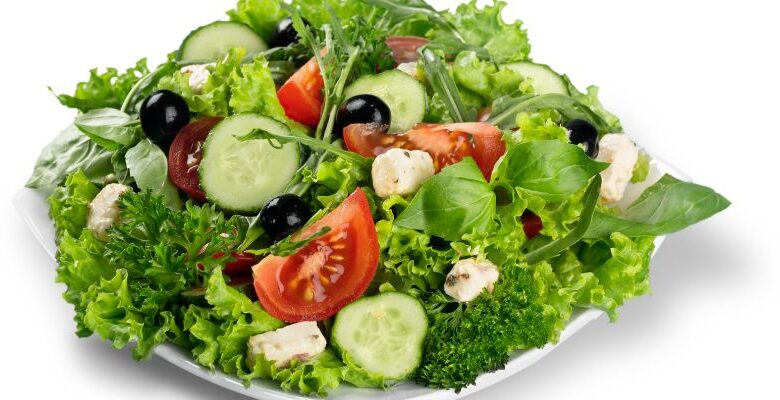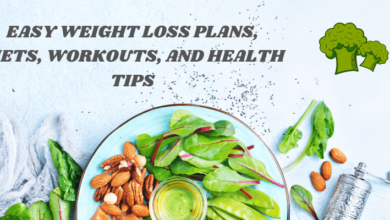Delicious Healthy Salads That Are Fresh and Filling

Eating a healthy diet is essential for overall well-being, and one of the best ways to achieve this is by incorporating delicious and healthy salads into your meals. Salads offer a plethora of benefits, from providing essential nutrients to aiding in weight management. In this article, we will explore the world of delicious healthy salads, providing you with 15 mouthwatering recipes that are both fresh and filling.
Benefits of Healthy Salads
Healthy salads offer a wide range of benefits that contribute to a balanced diet and improved health. Firstly, they are packed with nutrients and vitamins, as they typically contain a variety of vegetables and fruits. These natural ingredients provide essential vitamins, minerals, and antioxidants that support various bodily functions.
In addition, salads can be an excellent choice for those looking to manage their weight. By incorporating salads into your daily meals, you can increase your fiber intake, which helps keep you feeling fuller for longer. The high water content in salads also adds to their filling nature, helping to reduce calorie intake without sacrificing satisfaction.
Furthermore, salads promote digestion and gut health. The fiber-rich vegetables and fruits aid in proper digestion and can prevent constipation. Additionally, the beneficial bacteria in your gut thrive on the fiber found in salads, contributing to a healthy and balanced gut microbiome.
What may I eat in addition to salad to make it filling?
To make your salad more filling, you can add various ingredients to enhance its nutritional value and satiety. Here are some options to consider:
- Protein-rich foods: Include lean proteins such as grilled chicken, turkey, salmon, tofu, boiled eggs, or chickpeas. These protein sources will not only add flavor but also provide a sense of fullness and support muscle growth and repair.
- Whole grains: Add cooked quinoa, brown rice, or whole wheat couscous to your salad. These complex carbohydrates provide sustained energy and additional fiber, making your salad more satisfying.
- Healthy fats: Incorporate sources of healthy fats like avocado, nuts, seeds, or extra-virgin olive oil. These fats not only enhance the taste but also contribute to a feeling of satiety and help your body absorb fat-soluble vitamins.
- Legumes: Include beans, lentils, or chickpeas in your salad. These legumes are rich in fiber and protein, making your salad more filling and nutritious.
- Roasted vegetables: Roasting vegetables like sweet potatoes, Brussels sprouts, or butternut squash adds a delicious flavor and a hearty element to your salad. The roasting process brings out their natural sweetness and creates a satisfying texture.
- Cheese or dairy products: If you consume dairy, you can add some crumbled feta cheese, goat cheese, or grated Parmesan to your salad. These ingredients add creaminess and flavor while providing calcium and protein.
- Fresh fruits: While fruits are commonly associated with sweet dishes, adding some sliced apples, berries, or citrus segments to your salad can provide a refreshing burst of flavor and natural sweetness.
- Herbs and spices: Experiment with fresh herbs like basil, cilantro, mint, or dill to add a burst of flavor to your salad. Additionally, spices like cumin, paprika, or turmeric can bring a unique and aromatic twist.
By incorporating these filling ingredients into your salad, you can create a nutritious and satisfying meal that will keep you energized and satisfied throughout the day. Remember to choose ingredients that align with your dietary preferences and requirements.
What is the healthiest salad to eat?
When it comes to determining the healthiest salad to eat, several factors come into play, including the choice of ingredients and the overall balance of nutrients. While there isn’t a single definitive answer, here’s a salad that incorporates various nutritious components:
Superfood Power Salad
Ingredients:
- Kale or spinach (base)
- Quinoa (whole grain)
- Grilled chicken or tofu (lean protein)
- Avocado (healthy fat)
- Cherry tomatoes (vegetable)
- Cucumber (vegetable)
- Blueberries or pomegranate seeds (fruit)
- Almonds or walnuts (nuts)
- Balsamic vinaigrette (dressing)
This superfood power salad offers a wide range of nutrients and benefits. Let’s examine each ingredient’s health advantages in more detail:
- Kale or spinach: Both kale and spinach are nutrient-dense leafy greens packed with vitamins A, C, and K, as well as fiber and antioxidants that support overall health and well-being.
- Quinoa: As a whole grain, quinoa provides complex carbohydrates, fiber, and essential amino acids, making it a nutritious addition to the salad. It adds texture and sustains energy levels.
- Grilled chicken or tofu: Adding grilled chicken or tofu boosts the salad’s protein content, which is essential for muscle growth, repair, and satiety. Choose lean proteins to keep the dish healthy.
- Avocado: Avocado is a source of healthy monounsaturated fats, which can help improve heart health. It also provides essential vitamins and minerals, such as potassium and vitamin E.
- Cherry tomatoes and cucumber: These vegetables are hydrating and rich in vitamins, minerals, and antioxidants. They add freshness, flavor, and a crunchy texture to the salad.
This superfood power salad incorporates a variety of nutrient-dense ingredients, offering a balance of carbohydrates, proteins, healthy fats, vitamins, minerals, and antioxidants. Remember to adjust the portion sizes according to your individual dietary needs and goals.
conclusion
In conclusion, delicious and healthy salads provide a multitude of benefits for overall well-being. They are nutrient-dense, promote weight management, and support digestion and gut health. By incorporating fresh and filling ingredients into your salads, you can create meals that are not only nutritious but also satisfying to the taste buds.
Choosing a variety of colorful vegetables, fruits, lean proteins, healthy fats, and flavorful dressings and toppings ensures that your salads are packed with essential nutrients and flavors. Experimenting with different ingredients, textures, and cooking techniques adds variety and keeps your salads interesting.





